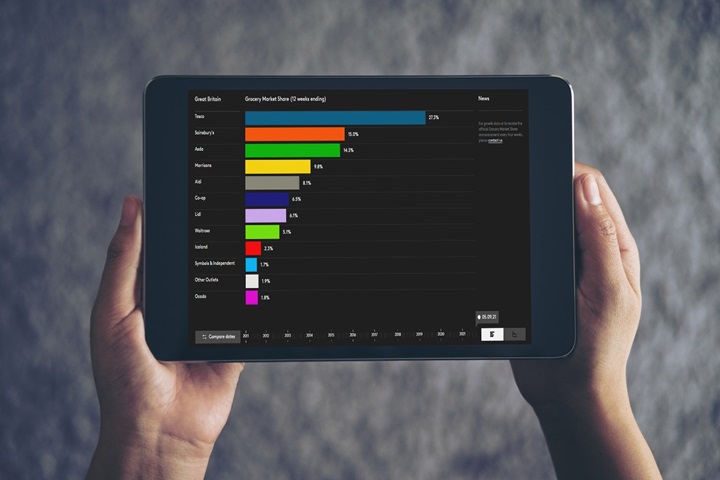Grocery price inflation fell for the seventh month in a row to 11% for the four weeks to 1 October 2023, the lowest rate since July 2022, according to our latest data. Take-home grocery sales over the same period rose by 9.1% compared with last year.
Grocery price inflation is still very high, but shoppers will be relieved to see the rate continuing to fall. For the first time since last year, the prices of some staple foods are now dropping and that’s helping to bring down the wider inflation rate. Dairy was one of the categories where costs really shot up last autumn, but the average price paid for a 250g pack of butter is now 16 pence less than 12 months ago.
Promotional sales highest since June 2022
A jump in the amount of money spent on offers is also helping to lower inflation. Supermarkets are looking at all the different ways they can deliver value at the tills and while the emphasis for some time has been on everyday low prices, the retailers are starting to get the deal stickers out again. Spending on promotions made up over a quarter of all sales in the latest 12-week period at 26.5%, the highest level since June 2022.
Tesco, in particular, has been driving the increase, with some positive results. The nation’s biggest supermarket saw sales rise by 9.2% over the latest 12 weeks, with its market share edging up by 0.4 percentage points to 27.4%. Brands have also done well. Branded promotion sales hit their highest rate since January this year, helping the category grow sales by 7.3% across the 12-week period and narrow the gap with own-label lines, which grew by 10.1%.
Warmer weather prolongs sales for summer staples
The joint warmest September on record meant people got to enjoy some of their summer favourites for a little longer this year. Sunnier weather last month meant the barbecues stayed out of sheds for another few weeks. Shoppers made the most of the higher than average temperatures, with volume sales of ice cream, burgers and dips shooting up by 27%, 19% and 10% respectively. And as they basked outside in the autumn heat, people opted to be sensible which saw sun care product sales more than doubling across the month. Christmas seemed further away for many with fewer people buying Christmas puddings and seasonal biscuits as volume sales were down by 14% and 29% versus this time last year.
Lidl was the fastest growing retailer this month with sales up 15.2%. This is the first time that Lidl has led the pack since April 2023 and the growth means it now has a market share of 7.6%, up 0.5 percentage points year on year. Fellow discounter Aldi’s sales were up by 14.9%, with its total share of the market now at 9.9% up by 0.6 percentage points compared with a year ago.
Sainsbury’s share grew to 14.8% as its sales increased by 9.1% compared with last year. Asda and Morrisons now hold 13.7% and 8.6% of the market.
Amid reports that Waitrose could become the latest retailer to partner with Amazon for grocery delivery services, total online trips increased year-on-year for the first time this month since December 2021 by 3.1%. Waitrose has a 4.6% share with sales growth at 5.3% for the latest period.
Co-op’s market share sits at 6.1% with sales up 3.3%. Iceland’s sales rose by 2.8%, and Ocado grew sales by 9.6% to take 1.7% of the market.



